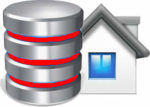Design and Deploy Highly Portable Database Applications
This is the Oracle Database 11g & MySQL 5.6 Developer Handbook by Michael McLaughlin, with 15 chapters and over 500 pages.
Chapter 1 looks at the architecture of both databases, and it looks at the similarities and differences of both. Chapter 2 looks at the client side, so talks about SQL Plus and MySQL Monitor and how
you call scripts and save them etc.
Chapter 3 covers users, roles, privileges etc. Chapter 4 covers transactions, so update and insert SQL statements. Chapter 5 covers database constraints, again the differences and similarities between both Oracle and MySQL.
Chapter 6 covers creating tables and users. Chapter 7 is all about dropping and modifying the tables and users. The next three chapters cover inserting, updating and deleting data. Then there is a chapter on queries, this includes unions, intersects, joins and views.
Chapter 12 is all about loading and merging data in the database with using a REPLACE statement in Oracle and a MERGE INTO on MySQL.
Chapter 13 is solely about how to program using PL/SQL in Oracle, this is quite a large chapter, but there is a lot to cover in PL/SQL. Then in the next chapter the author concentrates on MySQL and the whole chapter is given over to SQL/PSM basics,so again writing procedures and functions in the database. The final chapter is about triggers in both Oracle and MySQL.
At the back of the book are the answers to the quiz questions which are at the end of every chapter. The book is well laid out and easy to follow with lots of programming examples, and the syntax is easy to follow and understand.
Overall, this is a really useful book. If you currently use both MySQL and Oracle then this book will help you to use both at the same time, by introducing you to the different aspects of both databases, but also telling you where they overlap so you can write the same SQL statements where possible.
On the other hand you may be using Oracle or MySQL, and are now about to start using the other database, so you want to know how to get the same programming work done but you need to learn the equivalent syntax on the other database.
Readers who don’t currently use either Oracle or MySQL will get the most from this book, as you are really getting two books for the price of one. You can learn how to use Oracle and MySQL.
